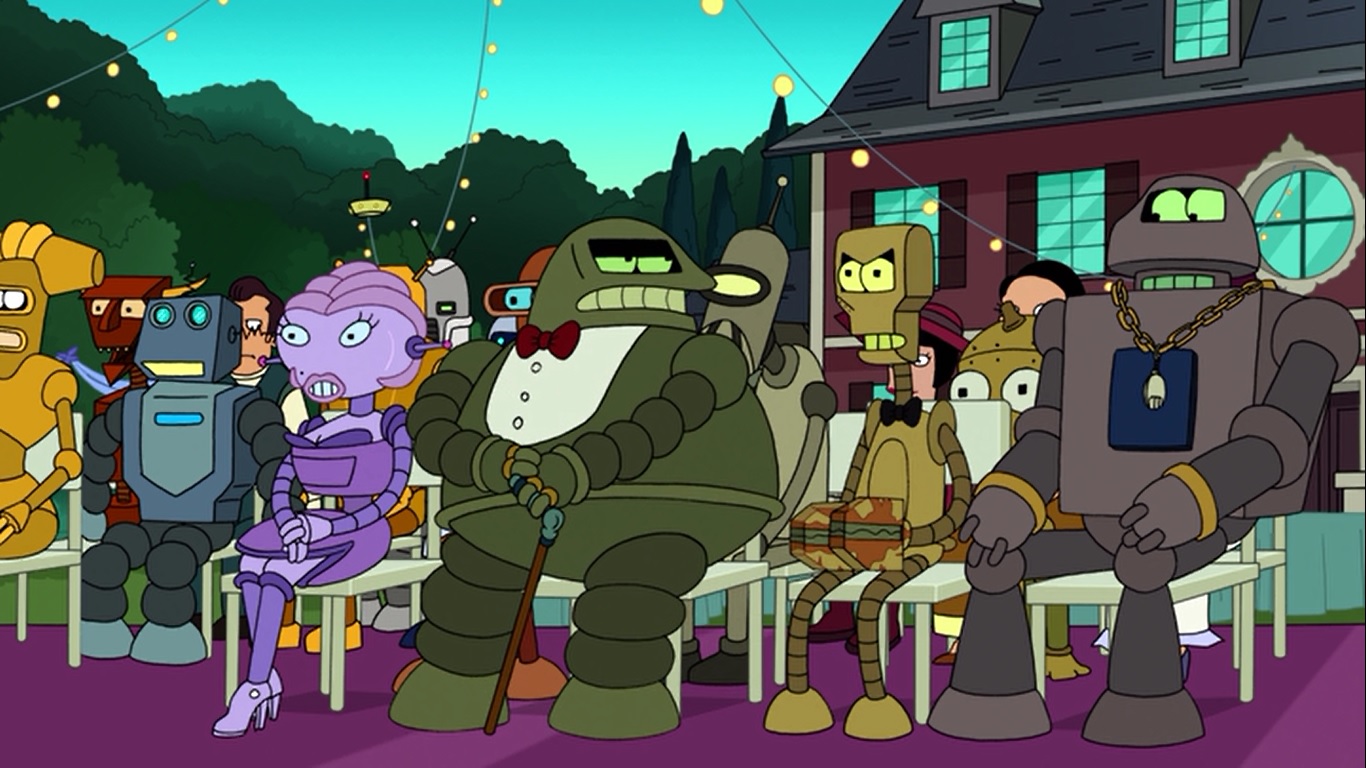
Review: Futurama – Season 1, Episode 1: Space Pilot 3000
Introduction
When Futurama premiered on March 28, 1999, it introduced audiences to a bold and imaginative vision of the future, blending science fiction with biting satire and absurd humor. Created by Matt Groening, the mind behind The Simpsons, and developed alongside David X. Cohen, Futurama was an ambitious show that combined futuristic world-building with character-driven storytelling.
The first episode, "Space Pilot 3000," serves as a brilliant introduction to this universe. It seamlessly establishes the show's core themes: existentialism, fate, and the absurdity of modern life projected into the distant future. With sharp writing, inventive animation, and memorable characters, this episode sets the stage for one of the most beloved animated series of all time.
Plot Summary
The episode follows Philip J. Fry (voiced by Billy West), a struggling pizza delivery boy in New York City on New Year’s Eve, 1999. Depressed by his mundane life, Fry delivers an order to a mysterious location—Applied Cryogenics—only to accidentally fall into a cryogenic chamber and become frozen for 1,000 years.
When he awakens on December 31, 2999, Fry finds himself in New New York, a sprawling metropolis filled with advanced technology, flying cars, and bizarre alien creatures. A robotic probe instantly assigns him a career as a delivery boy, much to his dismay. Refusing to accept the same dead-end fate, he attempts to escape his new life.
Along the way, he meets Turanga Leela (Katey Sagal), a one-eyed career assignment officer with a conflicted sense of duty, and Bender Bending Rodríguez (John DiMaggio), a foul-mouthed, alcohol-powered robot who initially wants nothing more than to commit suicide. Together, they go on the run, leading to a hilarious chase through the futuristic city.
Eventually, Fry discovers he has a living descendant, Professor Hubert Farnsworth (Billy West), a senile yet brilliant scientist who owns a small intergalactic delivery business. Deciding to embrace his new future, Fry joins the professor’s crew, along with Leela and Bender, as they embark on an exciting and unpredictable journey across the galaxy.
Analysis and Themes
A Perfect Introduction to the Futurama Universe
"Space Pilot 3000" excels at world-building, throwing viewers into a highly detailed and eccentric version of the future. From suicide booths to Heads in Jars, the episode is packed with imaginative ideas that would become hallmarks of the series.
The animation style, developed with Rough Draft Studios, perfectly balances classic 2D animation with early CGI elements, allowing for fluid motion in 3D environments. This combination helps bring New New York to life, making it feel like a vibrant, bustling world.
Philip J. Fry: The Relatable Everyman
Fry is instantly likable because he represents the ordinary, aimless person stuck in an unfulfilling routine. His accidental trip to the future is not just a comedic setup—it’s a metaphor for escaping mediocrity and finding purpose.
Despite the futuristic setting, Fry’s struggles are deeply human:
- He wants more out of life but feels trapped.
- He’s frustrated with his dead-end job.
- He’s hoping for a fresh start.
His excitement upon waking up in the future is genuine, and his reluctance to return to being a delivery boy is both humorous and relatable.
Leela and Bender: Instant Standout Characters
- Leela is more than just a strict career officer—she quickly develops into a character who questions the system, realizing she doesn’t want to be forced into a role any more than Fry does. Her strong-willed personality and depth make her an excellent foil to Fry’s carefree attitude.
- Bender, on the other hand, is a comedic masterpiece. His nihilistic attitude, love for booze and petty crime, and eventual friendship with Fry cement him as one of the show’s greatest characters. His suicidal tendencies are played for dark humor, but they also reveal a sense of loneliness and frustration, adding unexpected depth.
Together, the three form an unlikely yet compelling trio.
Humor, Satire, and Absurdity
As expected from Matt Groening, the humor in Futurama is sharp, layered, and filled with both highbrow and lowbrow jokes.
Some standout comedic moments in this episode include:
- Fry mistaking the countdown to 3000 for a Y2K bug catastrophe.
- The introduction of suicide booths, which satirize dystopian solutions to modern problems.
- The Heads in Jars, a brilliant satire of celebrity culture and immortality.
- The robot police officers, who embody over-the-top law enforcement stereotypes.
This episode’s satire targets both capitalism and bureaucracy, showing that even in the distant future, people are still trapped in meaningless jobs and oppressive systems.
Final Verdict
"Space Pilot 3000" is a near-perfect pilot episode, blending sci-fi, comedy, and clever social commentary. It efficiently sets up the world, introduces unforgettable characters, and delivers plenty of laughs along the way.
With sharp writing, engaging animation, and a brilliant mix of humor and heart, this episode laid the foundation for a series that would go on to become one of the greatest animated shows of all time.
Score: 9/10
- Hits: 77

































